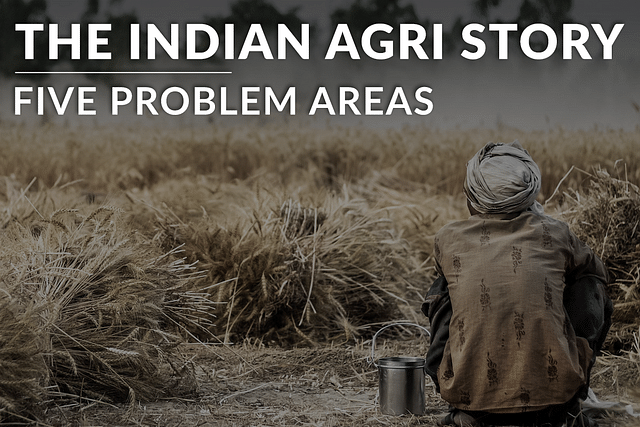
Where Indian Agriculture Is Going Wrong - Five Problem Areas
Transcript
In the previous episode in our series on Indian agriculture, we looked at what is perhaps one of the biggest factors influencing agriculture output - the monsoons. We sought to understand why they were so critical.
Today, we’ll zoom out a little bit and look at the big picture and see where Indian agriculture has been going wrong over the years - or where things can improve - and look at possible fixes.
Because over the decades since India’s independence, plenty of mistakes have been made in the agri sector. Like R Jagannathan writes, even where we have gotten things right, we have managed to snatch defeat from the jaws of victory.
Anyway, so let’s get out our laundry list.
First, the most obvious things that are wrong relate to two numbers: agriculture’s share of GDP is only one-third the size of the population dependent on it. And the shrinking size of farms.
Going by the 2010-11 agricultural census, 85 per cent of farmland is either small or marginal, with those tilling it having minimal capacity to invest in improving productivity. There are solutions to this - like creating non-farm jobs, investing in agro industry, etc.
But the big challenge here has been that politicians love small farmers - they can use the large numbers of poor farmers to advocate loan waivers before elections to try and win the vote; they can also pitch for higher support prices for the benefit of large farmers - at the cost of smaller ones.
So this needs fixing: break the nexus of big landowners and lawmakers by enabling small and marginal farmers to make a living outside farming.
Second, there is an obsession with subsidies and just not enough investment in irrigation, cold chains, and warehousing. It would make sense to abolish half the subsidies and instead give each operational holding a direct annual subsidy of Rs 8,000 per hectare, or Rs 4,000 per crop season.
The remaining subsidies could be used to keep urban food prices reasonable, and for buffer stocking operations. This will not only help farmers but also recreate a vibrant market for farm produce.
Third, there is simply too much intervention in the workings of the agricultural marketplace. We have inter-state restrictions on movement in farm goods, we have farmers being forced to sell their produce in mandis where traders can exploit them, we have export and import duties being imposed arbitrarily whenever domestic prices are too high or too low.
We need to create one market for India, and a small amount of money for price stabilisation schemes at the state level, so that neither the farmer nor the consumer is too badly hit by yo-yoing prices. Agriculture would benefit from vibrant markets, including forward markets, where farmers can sell their produce in advance without fear of prices crashing just after harvest time.
Fourth, our farm and land-related policies are too centralised and far removed from state-level realities. Each state faces a different problem on food security, and land availability is not the same everywhere. The agricultural problems of flood-prone Bihar, for instance, are not the same as those in the drought-prone districts of Maharashtra, Rajasthan, Gujarat, Karnataka or Telangana.
Each state must have its own version of the Food Security Act, and land acquisition policies should be state-needs-driven, not decided by NGOs and do-gooders in Delhi.
Fifth, the wrong crops are encouraged. India has nearly a sixth of the world population, but barely 4 per cent of its water resources. But our agricultural policies wrongly support water-intensive cultivation, whether it is encouraging sugarcane or rice, or high-yielding wheat or cotton. The pursuit of yields and profits has ensured that farmers are now focusing on exotic hybrids, which also use more water. According to one estimate, Indian agriculture uses 90 per cent of total water drawn but produces only around 15 per cent of GDP.
The future of Indian agriculture is about shifting away from water-intensive crops like sugar and rice and going back to more coarse cereals.
And there are plenty more problem areas as well as possibilities to resolve them. Head on over to the link in the description box - R Jagannathan’s story details a lot more on these aspects.
And before I sign off this, let’s just say this: the problems of Indian agriculture do not begin or end with the farm alone. The entire ecosystem needs change. And it would really help if Indian agriculture is freed from babudom.
If you’ve been watching our videos, you know that we’re doing a series on Indian agriculture. Make sure to catch our previous episode too. And please keep watching, and support us by subscribing to the channel.